
Stamp collecting is the collecting of postage stamps and related objects. It is an area of philately, which is the study of stamps. It has been one of the world's most popular hobbies since the late nineteenth century with the rapid growth of the postal service, as a stream of new stamps was produced by countries that sought to advertise their distinctiveness through their stamps.
The Scott catalogue of postage stamps, published by Scott Publishing Company, now a subsidiary of Amos Media, is updated annually and lists all the stamps of the world that its editors recognize as issued for postal purposes. It is published in fourteen large volumes that include twelve volumes containing all the countries of the world that have ever issued postage stamps, the United States Specialized Catalog, and the 1840–1940 Classic Specialized Catalogue. The numbering system used by Scott to identify stamps is dominant among stamp collectors in the United States, Canada and Mexico.

An overprint is an additional layer of text or graphics added to the face of a postage or revenue stamp, postal stationery, banknote or ticket after it has been printed. Post offices most often use overprints for internal administrative purposes such as accounting but they are also employed in public mail. Well-recognized varieties include commemorative overprints which are produced for their public appeal and command significant interest in the field of philately.

The Inverted Jenny is a 24 cent United States postage stamp first issued on May 10, 1918, in which the image of the Curtiss JN-4 airplane in the center of the design is printed upside-down; it is one of the most famous errors in American philately. Only one pane of 100 of the invert stamps was ever found, making this error one of the most prized in philately.

The Treskilling Yellow, or three schilling banco error of color, is a Swedish postage stamp of which only one example is known to exist. This stamp was cancelled at Nya Kopparberget, about 150 kilometres (93 mi) from Uppsala, on July 13, 1857. It was last sold in 2010. The auction house valued the stamp between £1.29 million and £1.73 million before the sale. The winning bid was kept confidential.
Linn's Stamp News is an American weekly magazine for stamp collectors. It is published by Amos Media Co., which also publishes the Scott Standard Postage Stamp Catalogue, the Scott Specialized Catalogue of United States Stamps and Covers, and the Scott Classic Specialized Catalogue of Stamps and Covers 1840–1940. Linn's was founded in 1928 by George W. Linn as Linn's Weekly Stamp News.

An airmail stamp is a postage stamp intended to pay either an airmail fee that is charged in addition to the surface rate, or the full airmail rate, for an item of mail to be transported by air.
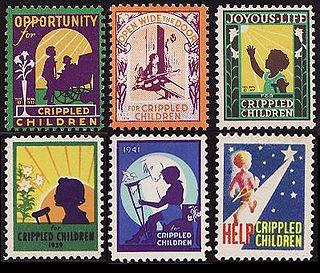
In philately, a cinderella stamp is a label that resembles a postage stamp, but which is not issued for postal purposes by a government administration. There is a wide variety of cinderella stamps, such as those printed for promotional use by businesses, churches, or political or non-profit groups. The term excludes imprinted stamps on postal stationery.

The British Guiana 1c magenta is regarded by many philatelists as the world's most famous rare stamp. It was issued in limited numbers in British Guiana in 1856, and only one specimen is now known to exist. It is the only major postage stamp ever issued in the United Kingdom or British Commonwealth that is not represented in Britain's Royal Philatelic Collection.

The Mauritius "Post Office" stamps were issued by the British Colony Mauritius in September 1847, in two denominations: an orange-red one penny (1d) and a deep blue two pence (2d). Their name comes from the wording on the stamps reading "Post Office", which was soon changed in the next issue to "Post Paid". They are among the rarest postage stamps in the world.

In philately, an invert error occurs when part of a stamp is printed upside-down. Inverts are perhaps the most spectacular of postage stamp errors, not only because of their striking visual appearance, but because some are quite rare, and highly valued by stamp collectors.
Mystic Stamp Company is an American, employee-owned stamp dealer founded in 1923 by Lawrence K. Shaver. The company is headquartered where it was founded, in Camden, New York. It specializes in the buying and selling of postage stamps, collecting supplies, and other philatelic items.

The Benjamin Franklin Z Grill, or simply "Z-Grill", is a 1-cent postage stamp issued by the United States Postal Service in February 1868 depicting Benjamin Franklin. While stamps of this design were the common 1-cent stamps of the 1860s, the Z-Grill is distinguished by having the so-called "Z" variety of a grill pressed into the stamp, creating tiny indentations in the paper. Although the 1-cent Franklin Z-Grill is generally cited as the rarest and most valuable of all US postage stamps, the 15-cent Lincoln Z-Grill is just as rare, also with only 2 known to exist. The 10-cent Washington Z-Grill is scarcely less rare with only 6 known to exist. First production runs of Z-Grill process were made of the common Z-grill denominations - the 2-cent Jackson, 3-cent Washington, and 12-cent Washington stamps. The earliest known postmarks of these Z-grill stamps date from January 1868. Then in February 1868 three other denominations were printed with the Z. Grill, the above mentioned 1-cent Franklin, 10-cent Washington and 15-cent Lincoln stamps. These three denominations were only in production for a short period of time with only about 1000 of each being printed before production shifted to the F-grill - resulting in the rarity of these 3 stamps.
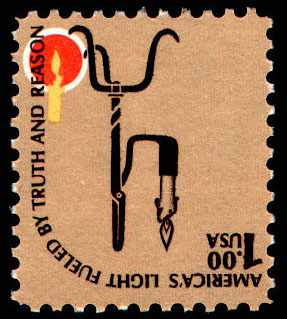
The CIA invert is a one-dollar value postage stamp error issued by the United States Postal Service. It is one stamp from the Americana series that were produced between 1975 and 1981. The $1 colonial rushlight holder stamp was first issued on July 2, 1979, and one pane of 100 stamps was issued with the dark brown inverted. The lamp candle holder, candle outline and text are inverted relative to the flame. About 95 copies have been accounted for. The stamp's Scott catalogue number is 1610c. This was the first United States stamp issued with a major design element printed upside down since the Dag Hammarskjöld invert error of 1962. As these $1 stamps were printed in sheets of 400, three additional panes of 100 stamps certainly existed at one time, but no trace of these has been discovered.
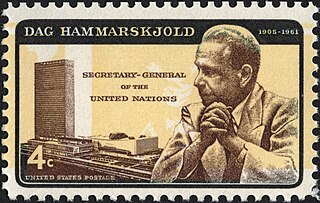
The Dag Hammarskjöld invert is a 4 cent value postage stamp error issued on 23 October 1962 by the United States Postal Service one year after the death of Dag Hammarskjöld, Secretary-General of the United Nations, in an airplane crash. The stamp, showing the yellow background inverted relative to the image and text, is also known as the Day's Folly after Postmaster General J. Edward Day who ordered the intentional reprinting of the yellow invert commenting, "The Post Office Department is not running a jackpot operation."
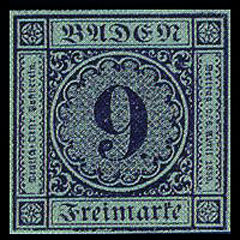
The Baden 9 Kreuzer Error is a postage stamp error produced by the historical German state of Baden in 1851.
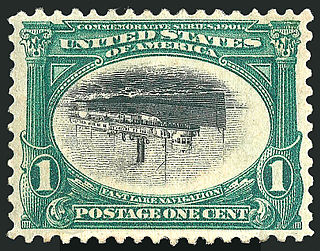
As part of the Pan-American Exposition held in Buffalo in 1901 the United States Post Office Department issued a series of six commemorative stamps. Each stamp featured an ornate colored frame enclosing a black-and-white image of some means of modern rapid transportation. In the standard American Scott catalog, these six stamps carry the numbers 294–299. The first day of issue for the stamps was May 1, 1901.
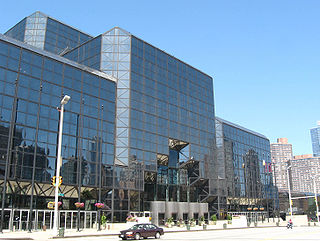
World Stamp Show-NY 2016 was an international exhibition of stamp collecting held at the Jacob K. Javits Convention Center in New York City from May 28 to June 4, 2016. It was the first international stamp show to be held in New York since FIPEX in 1956.

The Black Swan is the first postage stamp issued by the British colony of Western Australia in 1854. It illustrates a black swan, a typical Australian animal at the time and was the only image used on Western Australian stamps until 1902.















